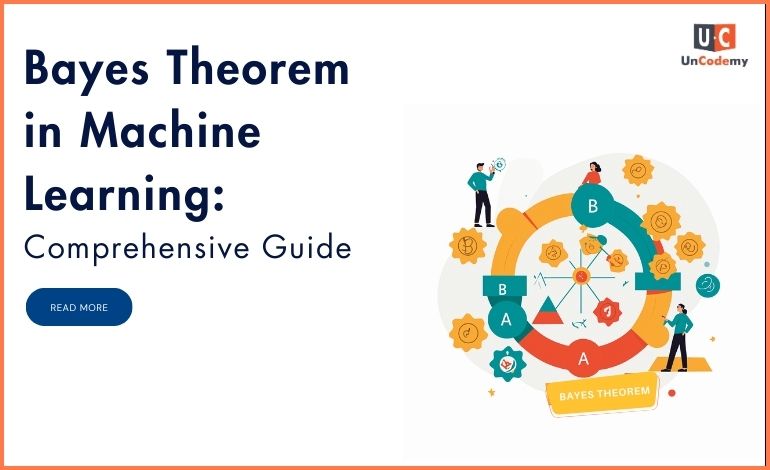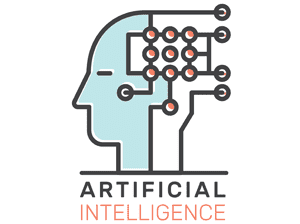Bayes Theorem in Machine Learning – Comprehensive Guide
Bayes Theorem is a fundamental yet intuitive concept in machine learning and statistics. This blog demystifies its real-world application and explains why it’s still relevant today.

Bayes Theorem is a fundamental yet intuitive concept in machine learning and statistics. This blog demystifies its real-world application and explains why it’s still relevant today.


When it comes to machine learning, it’s easy to get caught up in all the technical jargon and complicated formulas. But sometimes, the simplest ideas are the most powerful. One such idea is Bayes Theorem. It’s a cornerstone in the world of statistics and machine learning, and it’s more intuitive than you might think.
In this blog, we’ll explore Bayes Theorem in depth, unraveling its significance in machine learning, and showing you how to apply it with ease. So, let’s roll up our sleeves and dive in!
Bayes Theorem, named after the Reverend Thomas Bayes, is a mathematical formula used for calculating conditional probabilities. But don’t let that intimidate you—what it means in simple terms is that Bayes Theorem helps us make predictions or inferences based on prior knowledge and new evidence.
At its core, Bayes Theorem is based on the following principle:
We revise our beliefs based on new evidence.
Think about it like this:
The formula looks like this:
P(A|B) = (P(B|A) × P(A)) / P(B)
Where:
P(A|B) is the probability of event A occurring given that B is true (this is what we’re trying to find).
P(B|A) is the probability of observing event B given that A is true (this is the likelihood).
P(A) is the probability of event A occurring (prior probability).
P(B) is the probability of event B occurring (the total probability).
In the realm of machine learning, Bayes Theorem is the foundation for a particular type of algorithm called Bayesian Inference. Bayesian methods are used to update the probability for a hypothesis as more evidence or data becomes available. It’s like being on a journey and adjusting your route as you gather more signs pointing the way.
Here are a few key areas where Bayes Theorem plays a pivotal role in machine learning:
You might be wondering why this simple rule has such a profound impact on machine learning. Well, Bayes Theorem brings several key advantages to the table:
Real-Life Examples of Bayes Theorem in Action
Let’s now shift gears and look at some real-world applications of Bayes Theorem in machine learning.
Challenges and Limitations of Bayes Theorem
While Bayes Theorem is a powerful tool, it’s not without its challenges. Here are a few points to keep in mind:
"All models are wrong, but some are useful."
– George Box
Conclusion: The Beauty of Bayes Theorem
To sum up, Bayes Theorem is one of those timeless concepts that finds applications in nearly every aspect of machine learning. It allows us to update our beliefs and make more informed predictions as we gather new data, making it an indispensable tool for any data scientist or machine learning engineer.
In the ever-evolving landscape of machine learning, the flexibility, probabilistic nature, and capacity for continuous learning make Bayesian methods a must-know. Whether you’re working on spam detection, recommendation systems, or medical diagnostics, understanding Bayes Theorem gives you the key to making better decisions.
Remember, in machine learning, as in life, it’s not just about the final answer but the process of learning and adapting. And Bayes Theorem, with its power to incorporate new information, is the perfect guide for that journey.
Personalized learning paths with interactive materials and progress tracking for optimal learning experience.
Explore LMSCreate professional, ATS-optimized resumes tailored for tech roles with intelligent suggestions.
Build ResumeDetailed analysis of how your resume performs in Applicant Tracking Systems with actionable insights.
Check ResumeAI analyzes your code for efficiency, best practices, and bugs with instant feedback.
Try Code ReviewPractice coding in 20+ languages with our cloud-based compiler that works on any device.
Start Coding TRENDING
TRENDING BESTSELLER
BESTSELLER BESTSELLER
BESTSELLER TRENDING
TRENDING HOT
HOT BESTSELLER
BESTSELLER HOT
HOT BESTSELLER
BESTSELLER BESTSELLER
BESTSELLER HOT
HOT POPULAR
POPULAR